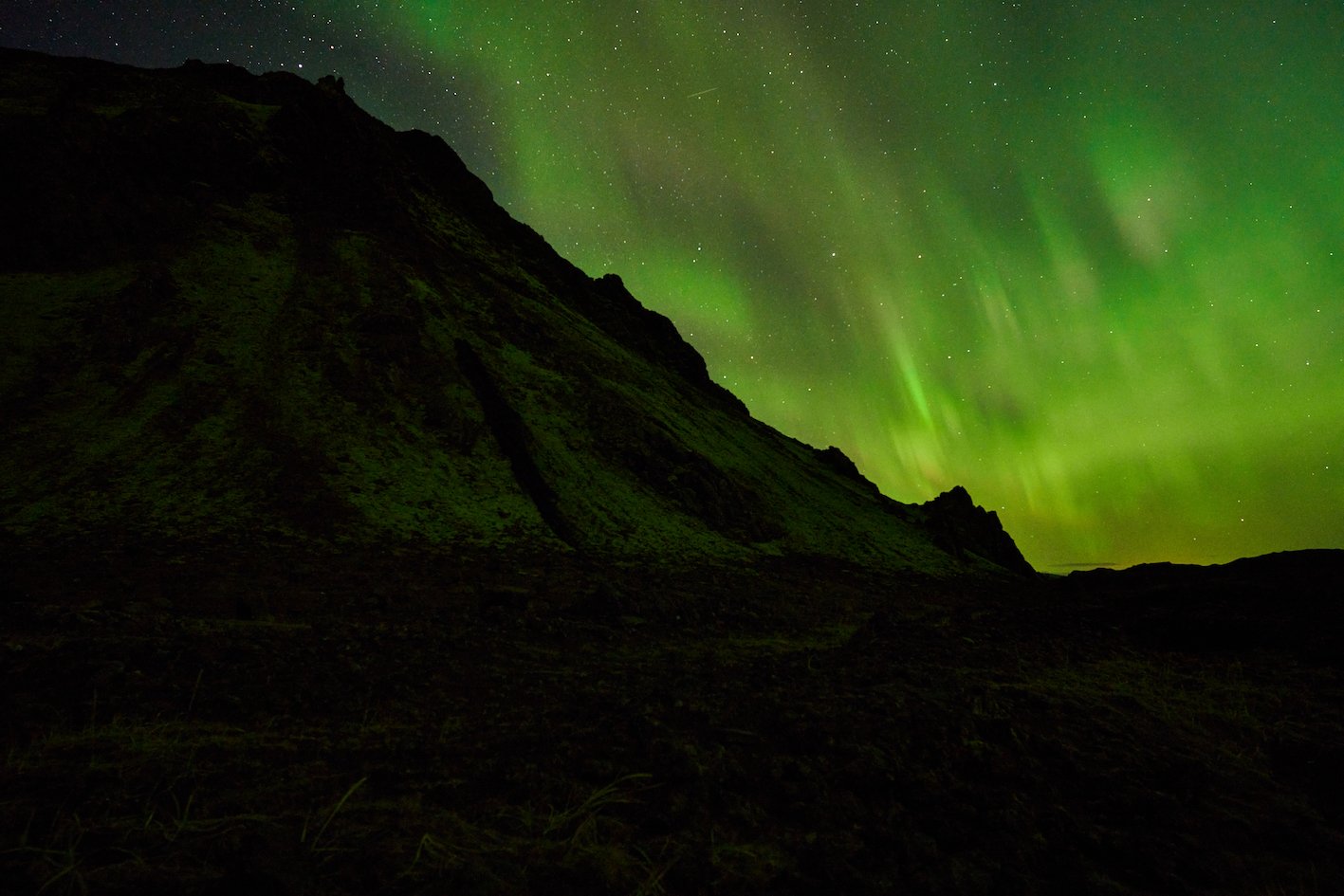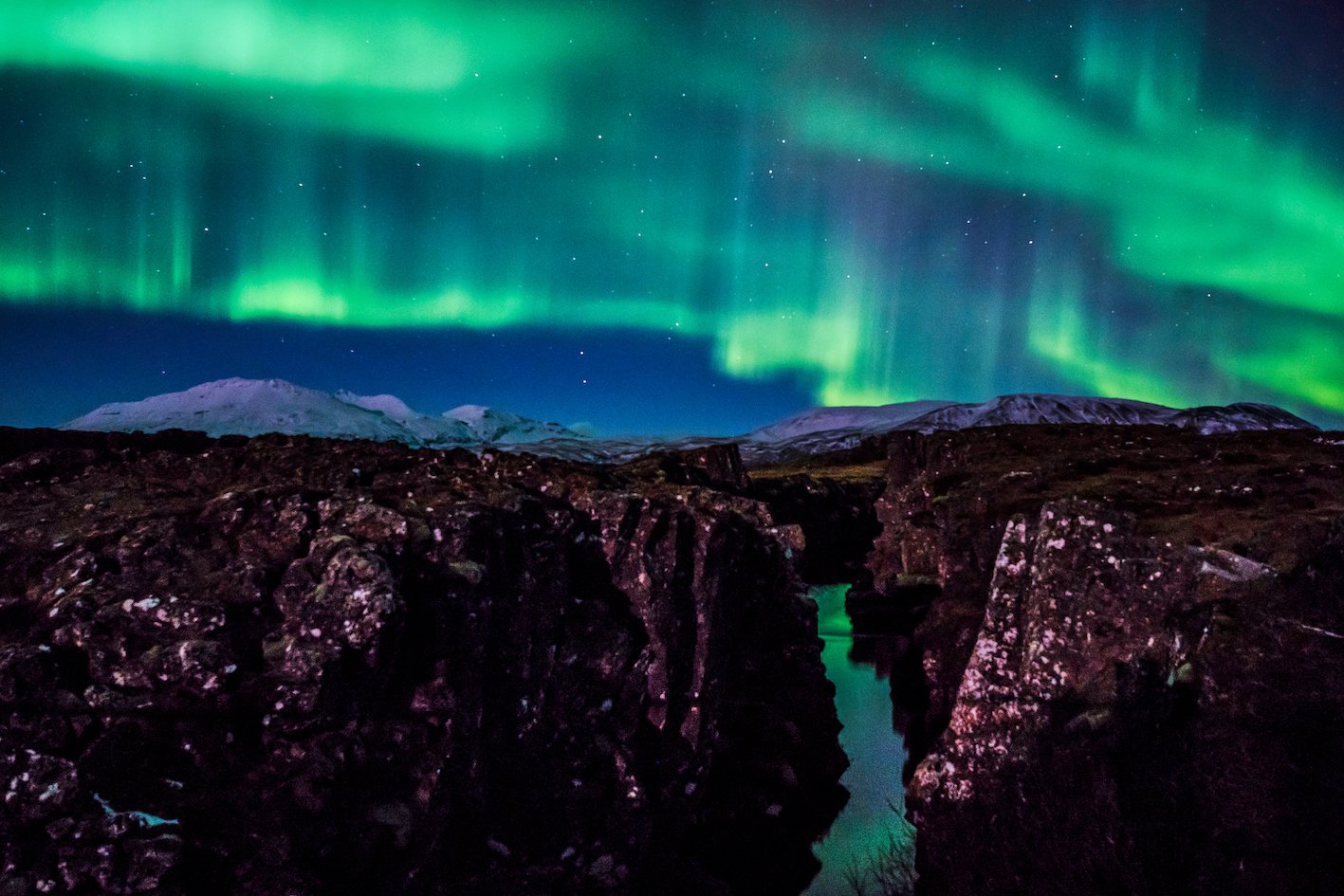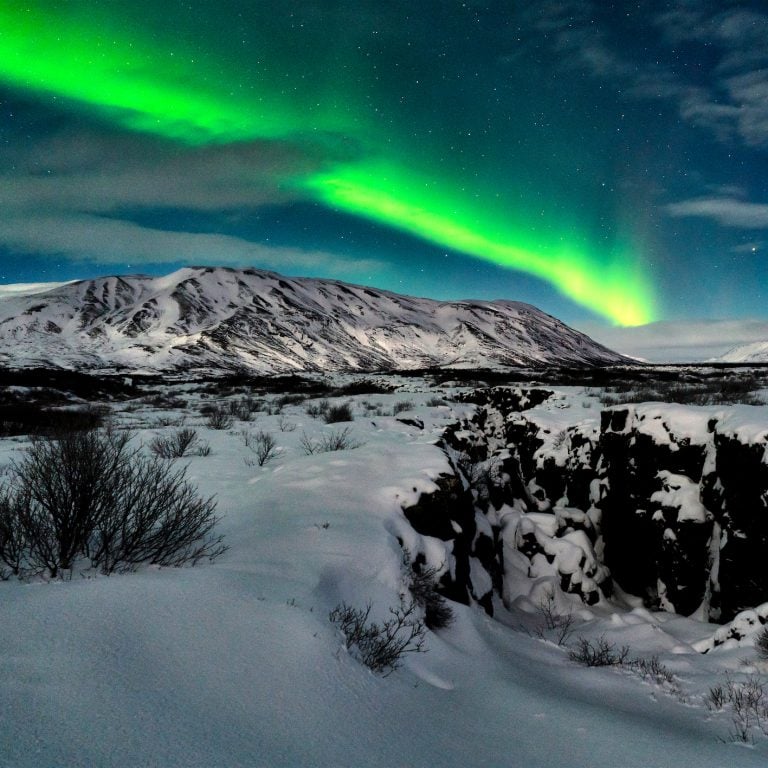It’s this time of the year. My experience as a photographer for more than four decades is that the aurora is most active around the fall and spring equinoxes. The best time to see and capture them in a photograph. Whether this is scientifically correct or proven is another story. Because the northern lights, like all of nature, are unpredictable.
Northern lights are most frequent in the northern lights collar, which is a 500 km wide belt, about 2000 km from the magnetic poles. The whole of Iceland is located in this northern light belt. Lights that dance for us at an altitude of 100 km, the northern lights are formed when fast-moving charged particles from the sun, mainly electrons, collide with atoms and molecules at an altitude of about 100 km above the Earth. The particles do not come directly from the sun, but accumulate in the Earth’s magnetosphere, flow along the magnetic field lines, and get the acceleration and energy needed to produce the lights.
It takes patience to see, and or get a picture of this wonder. Then a good tripod, and a good, light-sensitive wide lens to capture the magic. Were they there for just a moment or not?



Reykjavík 03/10/2023 : A7R III, RX1R II : 2.0/35mm Z, FE 1.4/24mm GM, FE 2.8/28mm


